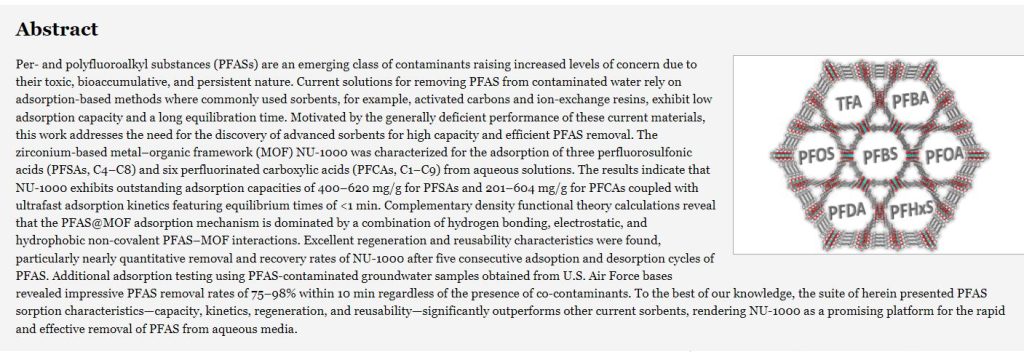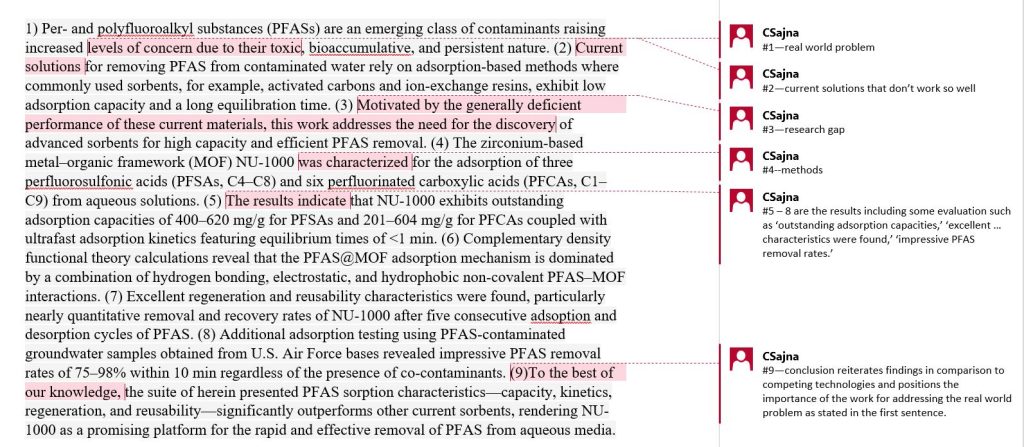Simplest Plan
Write the abstract last. Then you can write one or two sentences to summarize each section of the paper.
- 1st sentence: The real world problem the work will eventually address
- 2nd sentence: The problem with current technologies to address that real-world problem
- 3rd sentence: The research gap and how the work reported here will address it
- 4th sentence: The methodological approach
- 5-7th sentences: The important results
- 8th sentence: Provide conclusion–either key findings, key importance of work or future work
Don’t use the simplest plan if….
- You haven’t written the paper yet as is common when submitting abstracts to a conference.
- You may not want to present key results or findings in the abstract.
- There may be some extremely complicated formulas, compounds or methods that you need to explain.
- You may be comparing the results of different methods.
- You may need to forestall an audience eager to critique every step of your work.
The abstract below will be analyzed.

Analysis of the abstract structure

Conference Abstract Writing
- You must address three different audiences, convincing them of the merit of your work.
- You must summarize each section of your paper/report/poster: each section in one sentence. The abstract often has a word limit and is usually one paragraph, but you might want to think of it as 4 mini-elevator pitches because….
Your audience
- The panel who admits or denies your submission to the conference
- The judges who will evaluate your submission, poster, presentation
- The attendees who need to decide which posters to visit
Typical sections
- Introduction: What real world problem might your research be relevant to?
- Purpose: What was your research question?
- Methods: How did you try to find the answer to your question?
- Results: What was answer to your question?
Mapping the needs of different audiences upon the different components, results in the following:
1-2. From Introduction through Purpose: You will probably need a couple of sentences between #1 and 2, in order to move from the world level problem to the more specific problem that you’re trying to solve. These sentences should be written for a general audience.
3. The methods should be written for an expert audience—the judges. It should highlight validity, reliability and innovation.
4. The results should be written for the conference organizers. Some authors are coy about revealing their results since they want the audience to visit the poster or read the article. More likely however, conference visitors will be attracted by significant and interesting results.
